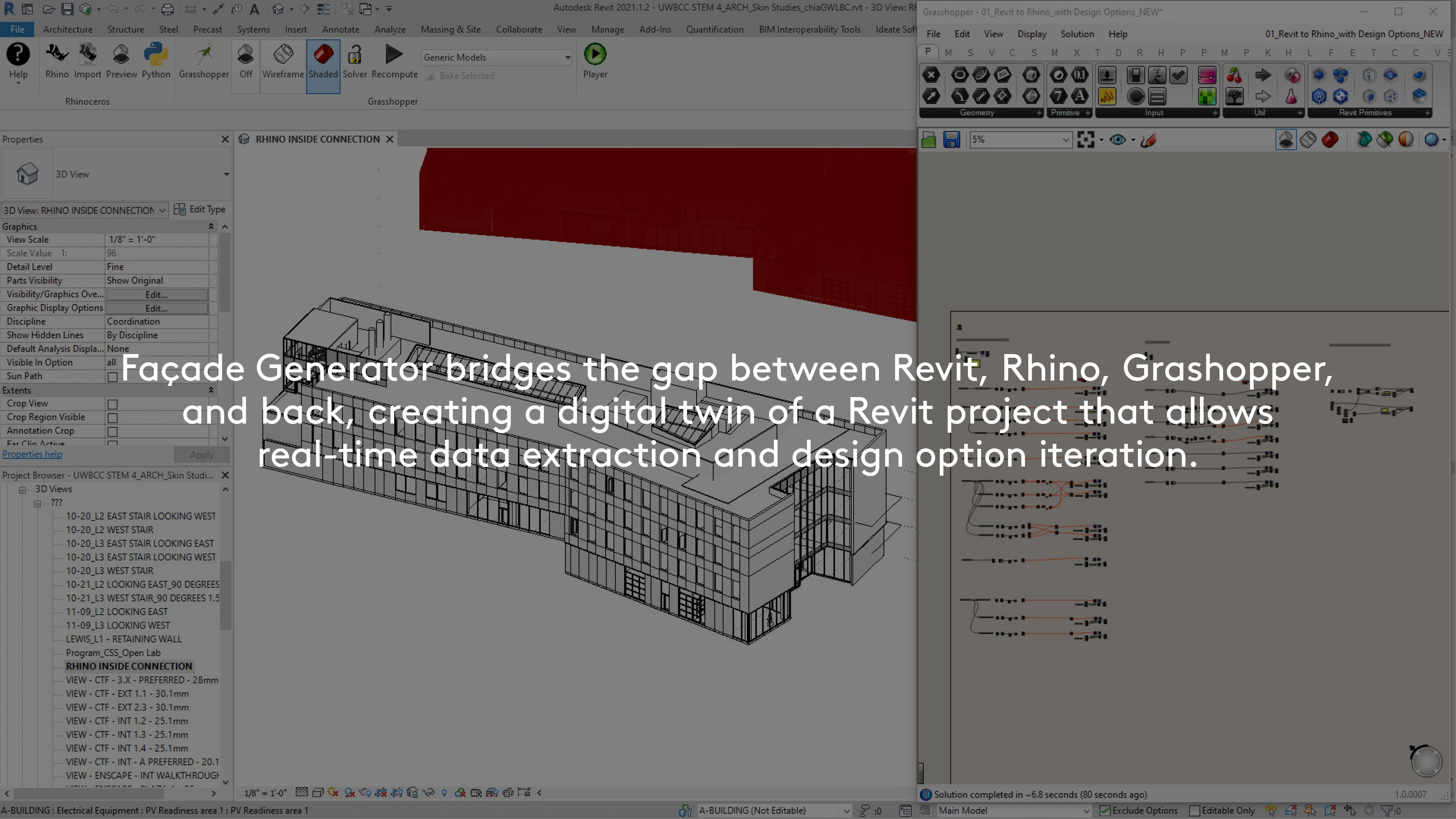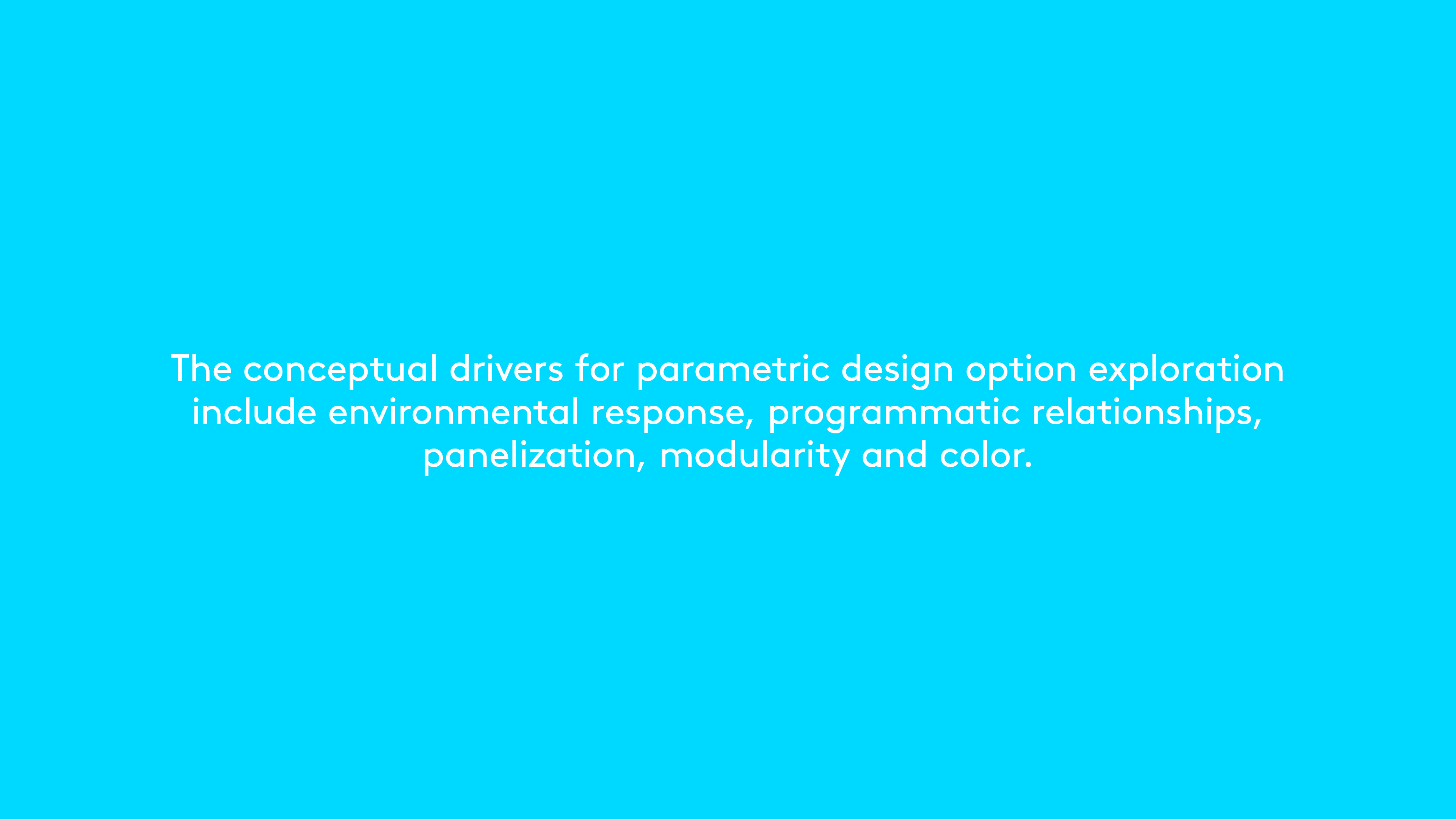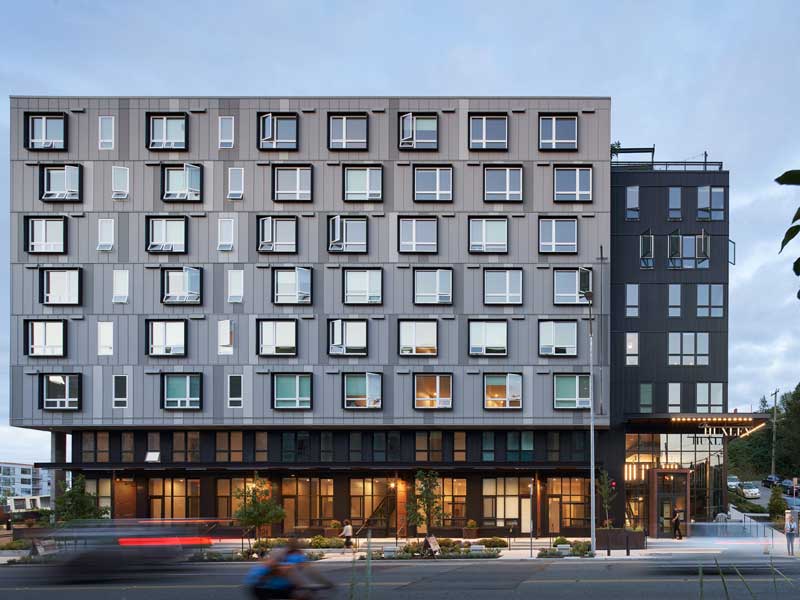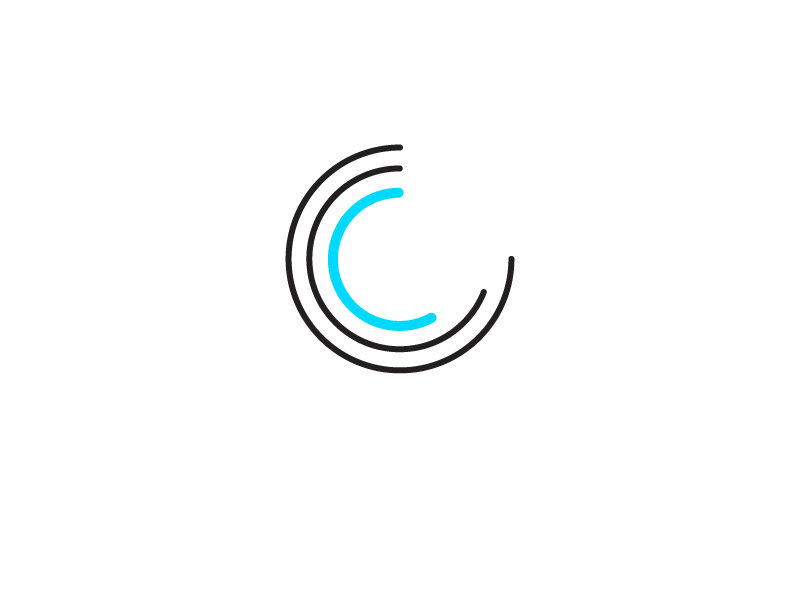Connecting Platforms to Accelerate Design
Vision
Façade Generator bridges the gap between Revit and other modeling programs, specifically Rhino and Grasshopper, to easily study façade patterns and articulation that are otherwise too cumbersome to implement or explore in Revit at early stages of a project. The Façade Generator expands Mithun’s design workflow and enables teams to rapidly experiment with various design options. Conceptual drivers for design option exploration could include environmental response, programmatic relationships, panelization, modularity and color. The generator was initially tested through the exploration of options for UW Bothell STEM4 façade design and will continue to enhance the design process firm-wide.
Research
Facade Generator research and implementation was conducted in multiple steps. The team began by establishing a connection between live Revit and Rhino working files, and creating a digital twin of the project in both programs. This allowed for easy extraction of information out of Revit and simultaneously updating it in Rhino. The connection to live base geometry from Revit is continuous (definitions will not fail when new geometry is added or modified in Revit).
Next, Grasshopper definitions were developed to allow the study of façade design with parametric control. To do this, imported Revit geometry was abstracted and optimized for Grasshopper operations. Then, numerous Grasshopper definitions were developed to study a variety of exterior wall design with extensive parametric control.
The third step was integration with visualization programs to illustrate changes in the parametric control in real time. It is anticipated that the initial visualization link will be to Lumion, but future integration with VRay, Twinmotion and Enscape are possible.
Finally, the team generated a Grasshopper definition to push the chosen design option from Rhino back into Revit as an editable family. The process utilizes Rhino.Inside to generate native Revit geometry into Revit, as editable Revit families and elements rather than imported geometry that is static and not editable.
Looking Forward
Facade Generator is now operational, effectively connecting Revit and Rhino/Grasshopper environments. Additional study will make the operations easier and more accessible to a broader base of Rhino/Grasshopper users. Goals include creation of an interface/dashboard that will allow for parametric control without having to launch Grasshopper, or potentially even Rhino (Human UI, Thread, Mirar), and integration of sustainability tools to enable live feedback on building performance while exploring design options.









